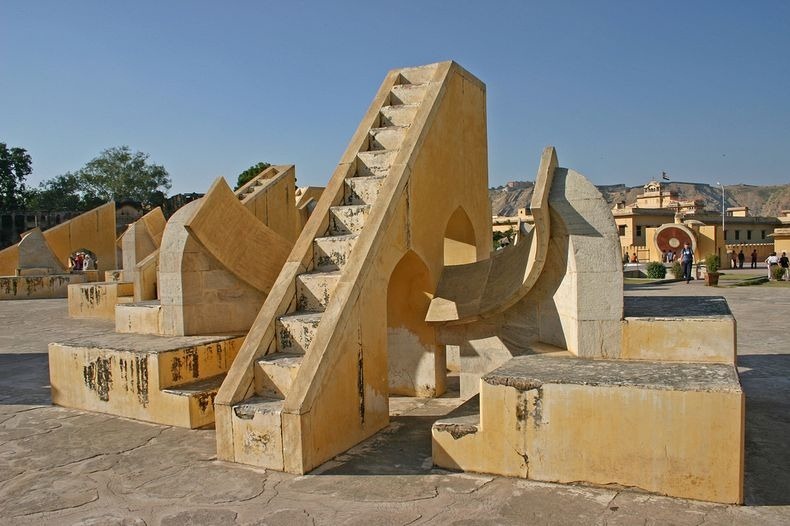Between
1727 and 1734 Maharajah Jai Singh II of Jaipur, India, constructed five
astronomical observatories in his native territory of west central
India. The observatories called "Jantar Mantars" incorporate multiple
buildings of unique form, each with a specialized function for
astronomical measurement.
These structures with their striking combinations of geometric forms at large scale, have captivated the attention of architects, artists, and art historians world wide, yet remain largely unknown to the general public.
Of the observatories originally built at Delhi, Jaipur, Mathura, Ujjain, and Varanasi, all but the Mathura observatory still exist. The condition of the instruments varies, due to the ravages of weather and lack of maintenance over time, but the observatories at Jaipur and Ujjain have have had considerable restoration, and repairs have been made from time to time at each of the sites.
The Jaipur observatory is the largest and best preserved of these. It has been inscribed on the World Heritage List as "an expression of the astronomical skills and cosmological concepts of the court of a scholarly prince at the end of the Mughal period"









These structures with their striking combinations of geometric forms at large scale, have captivated the attention of architects, artists, and art historians world wide, yet remain largely unknown to the general public.
Of the observatories originally built at Delhi, Jaipur, Mathura, Ujjain, and Varanasi, all but the Mathura observatory still exist. The condition of the instruments varies, due to the ravages of weather and lack of maintenance over time, but the observatories at Jaipur and Ujjain have have had considerable restoration, and repairs have been made from time to time at each of the sites.
The Jaipur observatory is the largest and best preserved of these. It has been inscribed on the World Heritage List as "an expression of the astronomical skills and cosmological concepts of the court of a scholarly prince at the end of the Mughal period"









No comments:
Post a Comment